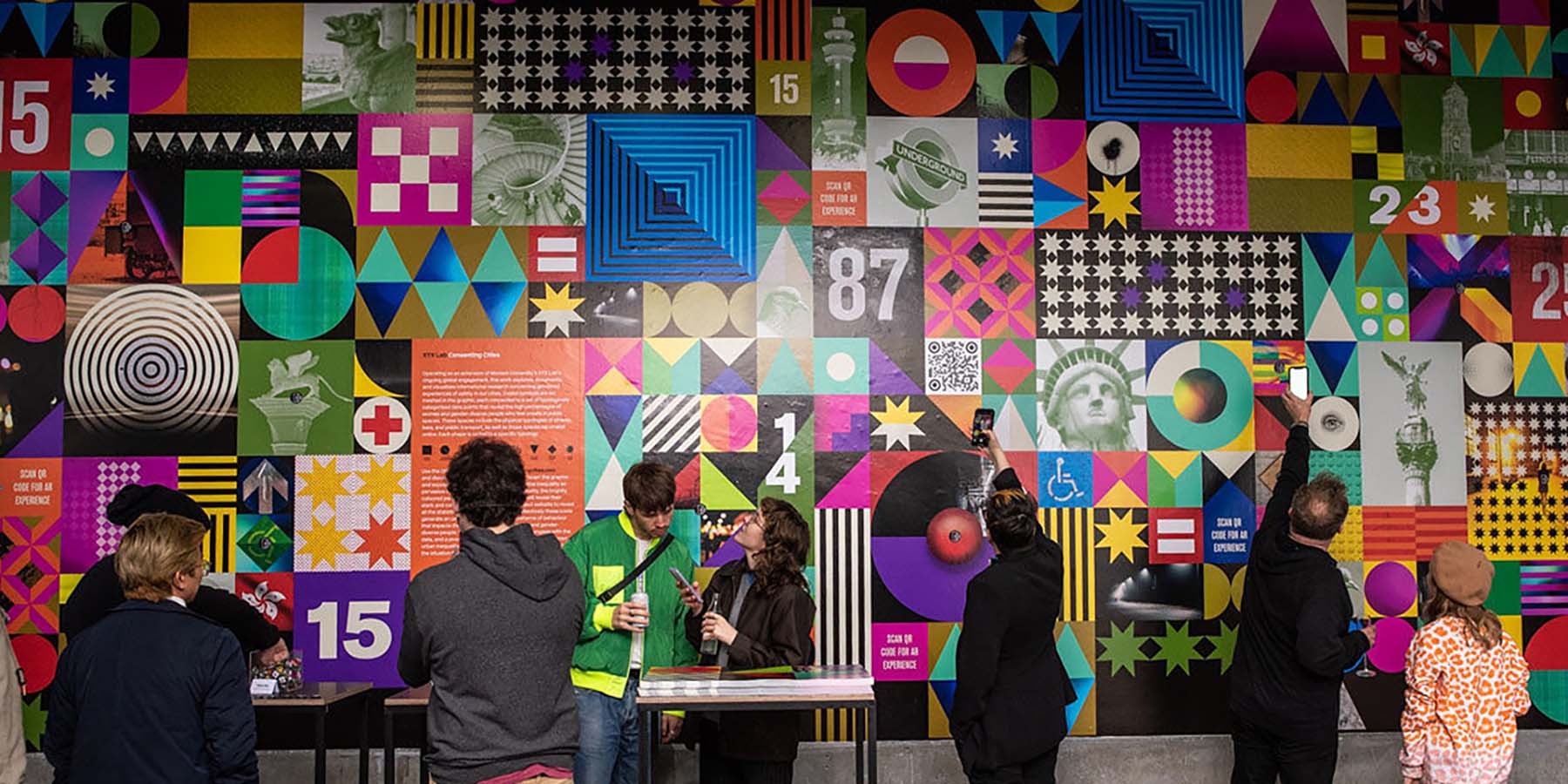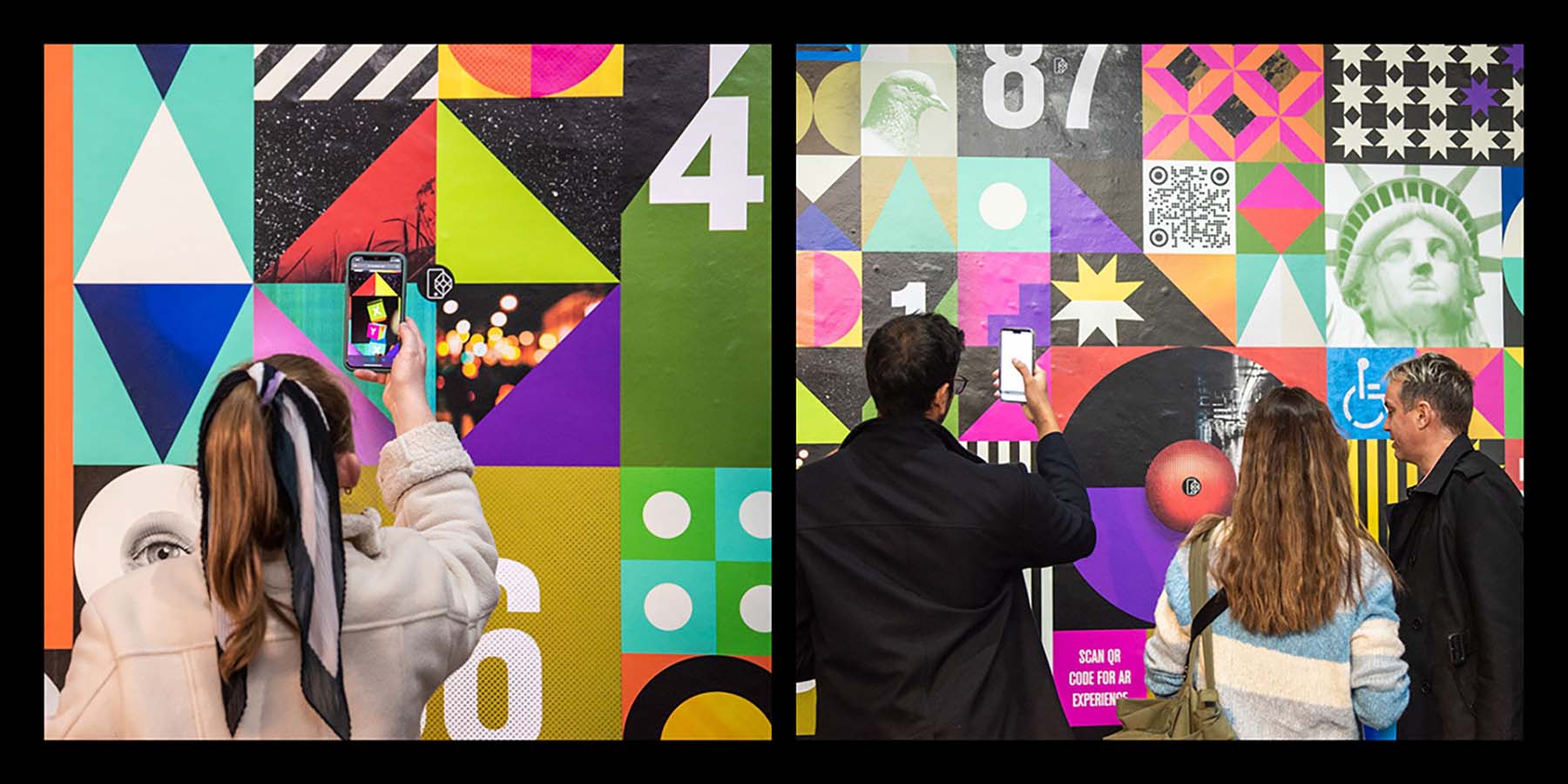The Design process gathered together a disparate collection of research data pertaining to the (unsafe) lived experience of women and gender diverse people in urban environments from around the world. The challenge was how to make the data engaging and immersive and simultaneously reflect the ‘hidden’ nature of the data and challenge the familiar promotional narrative of cities as safe and liveable. A wall of pattern was devised as a way of achieving this ambition.
The data was curated and coded into particular typologies of city spaces that present the most challenging experiences for women and gender diverse people. The typologies include ‘bars and nightclubs’, ‘public spaces’, ‘the street’, ‘after dark’, ‘educational institutions’ and ‘online cyber spaces’.
Each typology is represented through a particular geometric shape so that, visually, gallery visitors can see the impact of particular spaces in their cities. For example, Public Transport, is represented through the repeated circle motif that dominates the pattern and in doing so reveals itself as one of the most problematic safety experiences for women and gender diverse people.
Ten individual shapes were specially ‘coded’ to respond to particular statistics, that when viewed through a smart phone would reveal the relevant data via a web-based Augmented Reality app. Not every shape is coded in such a way, but every shape responds to a piece of data that is revealed through the accompanying website xyx-consentingcities.com.








